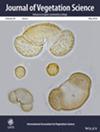Revisiting a Small Mediterranean Island: How Vegetation has Changed in the Last 15 Years
Abstract
Questions
The resurvey of historical vegetation plots has become a fundamental methodology in ecological research, as it provides a unique opportunity to estimate vegetation and environmental changes over time. Small islands are among the ecosystems where the effects of anthropogenic processes may be more detectable and less predictable. This research aimed to evaluate how the different vegetation types of a small Mediterranean island have changed over the last 15 years, both in terms of species and function and to relate these changes to the dominant land cover dynamics.
Location
Island of Pianosa, Tuscan Archipelago, Italy.
Methods
Revisiting 63 georeferenced vegetation plots in spring 2023, ensuring a close adherence to historical methodology and plot location. For each plot, vegetation changes related to processes detectable in the field (regression, dynamics, alien species or none) were assessed, and taxonomic and functional turnover was calculated. In parallel, NDVI changes were assessed on satellite images acquired during the two periods. In addition, two high-resolution orthophotos from 2007 and 2023 were used to classify land cover types into three classes: bare soil, grass and woody vegetation, and to assess changes in land cover types within a 20-m buffer around the plots.
Results
We assessed differences between vegetation types and the type of process detected for taxonomic and functional turnover, NDVI distances and land cover changes. The main drivers of taxonomic and functional turnover were the encroachment of typical shrub species into grasslands and a shift towards higher leaf area and height in rocky cliff communities, probably driven by higher levels of disturbance.
Conclusions
Our results shed light on the main drivers of change in small island contexts over a short time. These findings could provide crucial information for the conservation of Mediterranean habitats and the adequate representation of reliable climate change scenarios.


 求助内容:
求助内容: 应助结果提醒方式:
应助结果提醒方式:


